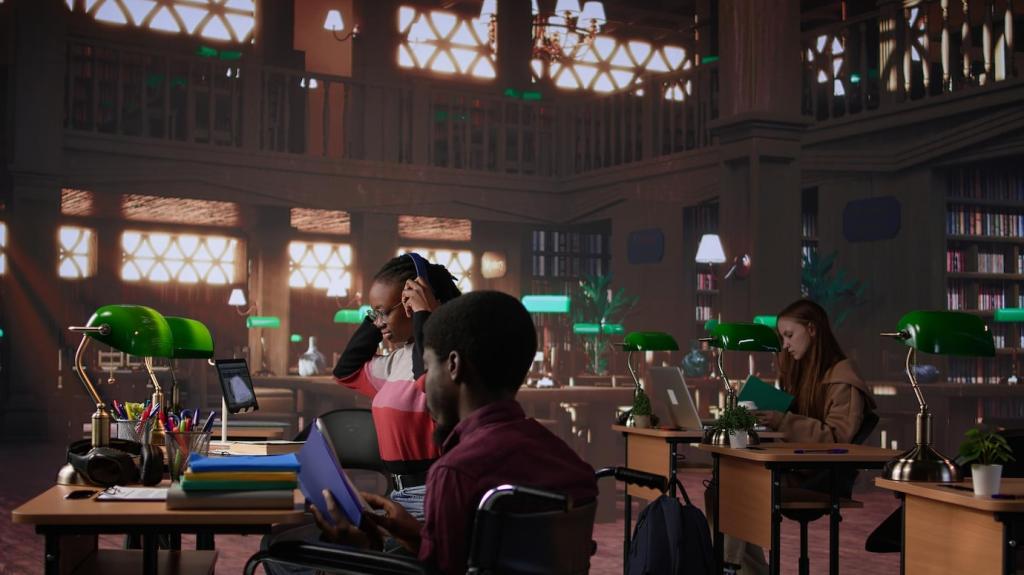The Role of VR in Distance Education and E-Learning
Virtual Reality (VR) is fundamentally transforming the landscape of distance education and e-learning. By creating immersive, interactive environments, VR provides learners with experiences that bridge the gap between theory and practice, enabling greater engagement, deeper understanding, and more meaningful connections in remote learning contexts. As institutions and educators adapt to the evolving needs of digital learners, VR emerges as a powerful tool for enhancing both the delivery and impact of educational content.
Transforming Learning Environments with VR
Virtual reality technology enables the creation of three-dimensional, interactive classrooms where learners feel present with peers and instructors, regardless of their physical locations. In these environments, users can participate in discussions, collaborate on projects, and access interactive resources as if they were physically together. This heightened sense of presence enhances communication and engagement, addressing many of the social and motivational challenges associated with remote learning. By overcoming physical barriers, VR fosters deeper collaboration and a sense of community that is often missing in traditional online courses.

Enhancing Engagement and Motivation
Active Participation Through Gamification
By integrating game-like elements such as challenges, progress tracking, and rewards, VR makes learning more engaging and enjoyable. In these gamified environments, learners are not merely spectators—they become active participants driving their own educational journey. The sense of achievement gained from solving problems or completing interactive modules motivates continuous engagement and persistence. Gamification in VR can thus turn mundane or difficult subjects into captivating quests that encourage repeated practice and sustained attention.
Story-Driven Learning Environments
VR excels at weaving courses into narrative-driven experiences that captivate learners and stimulate emotional investment. Instead of passively absorbing information, students become protagonists in immersive stories where their choices and actions shape the outcome. This storytelling approach fosters deeper comprehension and retention, as it connects course material to personal relevance and real-world applications. Narrative-driven VR modules can spark curiosity, inspire creativity, and make complex subjects come to life in a way that traditional textbooks and lectures cannot.
Social Connectivity and Collaboration
Although distance education often struggles with feelings of isolation, VR creates shared virtual spaces where students can interact, collaborate, and build relationships. Through avatars and voice communication, learners participate in group discussions, team projects, and peer activities that enhance both academic and social development. These dynamic interactions foster a strong sense of community, reduce dropout rates, and encourage continued participation. Social presence in VR environments bridges the gap between remote learners and supports a holistic, socially connected educational experience.
Overcoming Challenges in VR-Driven Distance Education
Access to VR technology is still uneven, with disparities based on geographic, economic, and technical factors. To ensure equitable opportunities in distance education, schools and policymakers must address issues such as hardware availability, internet connectivity, and user support. Strategies may include providing loaner headsets, establishing community VR labs, or developing lightweight applications compatible with affordable devices. By proactively working to bridge the digital divide, educators can ensure that all students—regardless of background—can participate in and benefit from VR-enhanced learning.
Creating effective VR learning modules demands significant investment in instructional design, media production, and subject matter expertise. Educational content must be pedagogically sound, engaging, and aligned with learning outcomes to deliver real value. Collaborative efforts between educators, technologists, and content developers are critical to producing VR experiences that are both technically impressive and educationally effective. As standards and best practices evolve, institutions must prioritize quality assurance and continuous improvement to meet the needs of diverse learners.
Successful adoption of VR in distance education hinges on the preparedness and confidence of educators. Many instructors may be unfamiliar with VR tools, requiring comprehensive training and ongoing professional development. Training programs should focus on both technical proficiency and pedagogical strategies for leveraging VR’s unique capabilities. Additionally, educators must be supported in adapting course designs, managing virtual classrooms, and assessing learning outcomes in immersive environments. Empowering teachers is key to unlocking VR’s transformative potential in e-learning.

